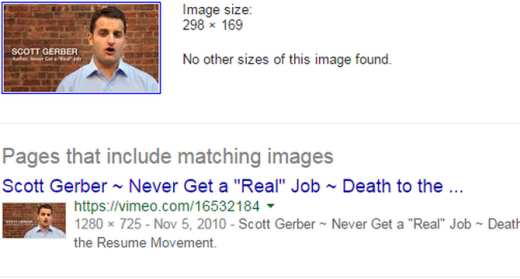
Producing consistent, valuable content is one of the best ways to increase your brand’s visibility and drive conversions. But, it is also an area people struggle with the most. From coming up with ideas on a regular basis, to arranging your business schedule for writing and creating, and then you have to stick to a content marketing plan – all of this process is a struggle for many business owners and entrepreneurs.
Hiring writers to create that content for you seems like a great solution. And it can be – if you know how to find and hire solid writers who can meet deadlines and produce great content on a regular basis. I’ve also found that it makes pretty much any company out there look bigger on budget.
I am going to share how to find and vet solid writers so you can develop a consistent content marketing plan that helps build your brand awareness, increases your thought leadership status, and actually helps drive leads for your business.
Where to Find Writers
Finding a good writer is a struggle, but not for lack of supply. There are thousands upon thousands of freelance writers who make a living creating good content. The key is finding the good ones. Here are a few places to start looking.
Your LinkedIn Network
Finding people you already know who write is one of the best ways to avoid hiring fake writers who stuff links. In the top search bar of LinkedIn search for words like writer, content marketer, and copywriter.

This search will quickly show you all the people you are connected with who write content. Scope out their profile and look at some of their work. If their writing style fits with your brand, look to see if they freelance. Or, shoot them a message and ask.
In Your Own Ranks
One of the keys to being productive is learning to delegate. Just because you don’t have time doesn’t mean others in your organization (or family!) don’t. Ask around to see if anyone in your company likes writing and has the bandwidth to take on a few articles a month. If you can find two or three people interested, you can split up the responsibilities even more.
Hire Freelancers
Finding freelancers can be frustrating, and it takes forever to find that one diamond in the rough that fits with your brand just right and doesn’t drop of the face of the earth right before deadlines. While it can take a while to find the right fit, it is worth the struggle. Here are a few places to look:
Still lost: We put together a freelancer guide that should help with this process if you have any problems. We have over 30 places with exactly what to do on each site.

Outreach
Simply putting out a statement saying “Hey, we are looking for writers!” can be quite effective. Write a post on your blog, share it on Twitter, Facebook, and Google+, and ask your employees and partners to do the same. For best results, make sure you make it simple to contact you, for example: “Want to write for us? Email editor@mywebsite.com for details!”
Also, consider adding a page or section to your “About Us” page for writers who may be looking to contact you. A simple “Want to write for us?” contact form can be highly effective if your blog gets good traffic.
Vetting Writers
Finding the writers is only half the battle. You also need to make sure you are hiring real people who know what they are talking about – and who won’t stuff in links to their own clients, essentially getting double paid for the same article. Not cool, and terrible for your site.
Here is a break down on how to research your writers before you hire them or allow them to guest blog on your site.
Your first step should always be to type the writer’s name into Google and see what pops up. You should see all their social profiles, other places they have written, and you might even see a Google graph result, like this one for Scott Gerber:

There are a couple things you should be looking for – first, do they have any Google results? Second, what quality of results come up?
For Scott Gerber, all the pictures look like professional head shots. He has written a few books, he has a Wikipedia page, and the top search result is his website. This looks good. He appears to be a real person, and quite a catch as a guest blogger.
A few red flags to look for:
- No Google results.
- A super common name, making it difficult to find them.
- Accounts on sites you don’t trust, such as spam or hacker sites.
- Inconsistent info, different ages, different start and end dates at companies, etc..
Bonus Tip:
Look past the first two or three pages of Google! Any half decent marketer can push bad results down.
Reverse Image Search Their Photo
When a writer applies to write for you, whether they are guest posting or getting paid, you should require a profile picture. A fake writer can choose a common name to throw you off your game, but they have to get their image from somewhere.
Right click the image they send (or use the image on the social profiles you find through Google), and click “Search Google for this image.”

This will pull up results that are “visually similar.” Be careful, as these aren’t super accurate:


Pretty sure Scott Gerber is not Barak Obama. But, these results are still helpful. If the image used was used to create several different personas, you would see this problem here next to “Pages that include matching results.” You are also able to see if the image was stolen from a stock photo site or a random person’s Facebook account. You might also see their image on different sites that didn’t show up in the top Google results.
Run Their Writing Through Copyscape
You should be requesting samples of writing when vetting a writer, or you might find articles the writer has published on other sites. Take a moment to run those samples through Copyscape to make sure they are original. If they are selling spun articles to other sites, there is a good chance you will get spun work.
There is also a chance they have sold the same article to multiple sources, and you want to know that as well.
Dive Deep Into Their Social Accounts
Social media makes it easier than ever to research writers before you hire. The biggest thing to look for is anything that look suspicious. Do the pictures look fake? Are there only a few updates? (This could be because of privacy settings.) Dig in and see what you can find – and remember to go past the first few pages. The red flags might be buried a year or two back.
Accounts to look into:
- The Big Three (Facebook, Google+, Twitter)
- Tumblr
- Contently
- Flickr
A few questions to ask as you dig through social accounts:
- How do they describe themselves? Do they claim to build links or promise to get clients to the first page of Google in a week? Those are red flags.
- How many connections/friends do they have? Who are they connected to?
- What company do they work for? Look at the website, does it look spammy?
- What type of updates do they share? Is it industry news, or pictures of them getting drunk?
- Do they attend industry conferences? (It is not a red flag if they don’t, but a benefit if they do.)
- Who in the industry are they connected with? What do those connections say about them?
- Whose content do they share? Is it the same people over and over again? Check to see if those people also share their links – it could be part of a content farm.

Final Thoughts
Finding and hiring good content writers may take time, but it is worth the hassle to protect your brand. Take the time to dig and look for red flags. Fake writers and content farms aren’t very good at hiding what they are doing – if you take the time to look.
Read Next: What the best writers know
Image credit: Shutterstock
Get the TNW newsletter
Get the most important tech news in your inbox each week.




